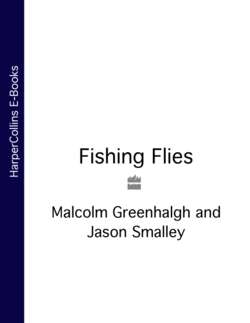Читать книгу Fishing Flies - Smalley - Страница 32
THE FIRST SALTWATER FLIES
ОглавлениеFlies dressed specially to catch saltwater fish are as old as the most ancient flies described here for catching freshwater fish. Again, we go back to Claudius Aelianus, in the second century AD (see also see here): ‘… one of the crew sitting at the stern [of the fishing boat] lets down on either side of the ship lines with hooks. [Each hook is] wrapped in wool of Laconian red, and to each hook attached to feather of a seamew [sea gull]’.
This is a very simple fly; but it would still take mackerel, pollock and even species like bluefish and striped and sea bass.
But though these are flies for catching sea fish, they were not flyfished, and one of the difficulties when it comes to the early days of saltwater flies and fly-fishing is differentiating between ‘feathering’ and ‘fly-fishing’. A good instance of this is found in a book Fly-fishing in Salt and Fresh Water, published in 1851 anonymously (though reputedly by one Mrs Hutchinson). Five patterns are given:
HUTCHINSON FLY ONE
Tag: ½-inch-long, oval gold tinsel.
Tail: Red feather of cock-of-the-rock.
Body rear half: Red wool.
Body front half: Blue wool.
Rib: Oval gold tinsel.
Body hackle: Orange or crimson.
Wing: Underwing of cock-of-the-rock tipped white; overwing mallard dyed yellow.
Head hackle: Blue jay.
HUTCHINSON FLY TWO
Tag: ½-inch-long, oval gold tinsel.
Tail: Strips of red, orange, blue and green swan.
Body rear half: Red wool.
Body front half: Blue wool.
Rib: Oval gold tinsel.
Body hackle: Orange or crimson.
Wing: As tail, with white-tipped brown turkey over.
Head hackle: 0.
HUTCHINSON FLY THREE
Tag: ½-inch-long, oval gold tinsel.
Tail: Strips of scarlet and blue swan and silver pheasant dyed orange.
Body rear half: Red wool.
Body front half: Blue wool.
Rib: Oval gold tinsel.
Body hackle: Orange or crimson.
Wing: Scarlet, blue and orange swan, with peacock over.
Head hackle: 0.
HUTCHINSON FLY FOUR
Tail: Strips of mixed colours of swan.
Body rear half: Red wool.
Body front half: Blue wool.
Rib: Oval gold tinsel.
Body hackle: Orange or crimson.
Wing: Mallard dyed green.
Head hackle: Blue hackle.
HUTCHINSON FLY FIVE
Tag: 2 Turns Of Gold Twist.
Tail: Blue Cock Hackle.
Body: Red Wool.
Rib: Oval Gold Tinsel.
Body hackle: Red.
Wing: Red, Yellow And Green Dyed Mallard.
Head hackle: Guinea fowl (gallina).
These five flies are quite gaudy and clearly reflect the then new craze of tying gaudy flies that was engulfing the salmon fly at the same time (see here). But how were they fished? Mrs Hutchinson gives us a clue:
Most capital sea fly-fishing can be obtained off the coast of Connemara, viz., in Bertraghboy Bay, at the Skyard Rocks, at Deer Island, and off the Isle of Mweenish and the Isle of Arran. The whiting, pollack [sic] that are to be met there, take a large gaudy fly boldly. I have with a fly taken some in those parts, as large as nine pounds. I use seven flies at once, and have frequently taken seven fish at the same time.
Mrs Hutchinson was ‘feathering’, lowering her line with seven flies and jigging them up and down with the aid of a heavy weight. Her flies were not ‘cast’ as we fly-fishers cast a fly. It is still possible to catch several fish (such as pollock and mackerel) at once on a multi-fly jigged rig. But there is no need for such complicated flies when jigging or feathering.
It was also the method used by Sanez Reguart, Diccionario Historico de las Artes de Pesca Nacionales (1795), but his flies were dyed feathers (coloured hackles) tied on weighted (leaded) double hooks.
Theophilus South (real name Edward Chitty) did come up with a most simple fly that may have been cast in his The Fly Fisher’s Text Book (1841):
HERRING FRY
The fly is a white feather, projecting considerably over the hook, and it resembles the herring fry, of which both mackerel and Pollock are very fond.
James Wilson gave a fly, which could be used today for catching sea trout, in The Rod and the Gun (1844).
SEA TROUT FLY
… a singularly successful fly for sea-trout, large or small, may be made with silver tinsel enwrapping the whole body from head to heel … the wings, of a narrow elongated form, composed either of pure white or pale grey [hackles], or a mixture of both.
Try that on a big hook or tandem mount instead of a GRIZZLE SUNK LURE (see here).
